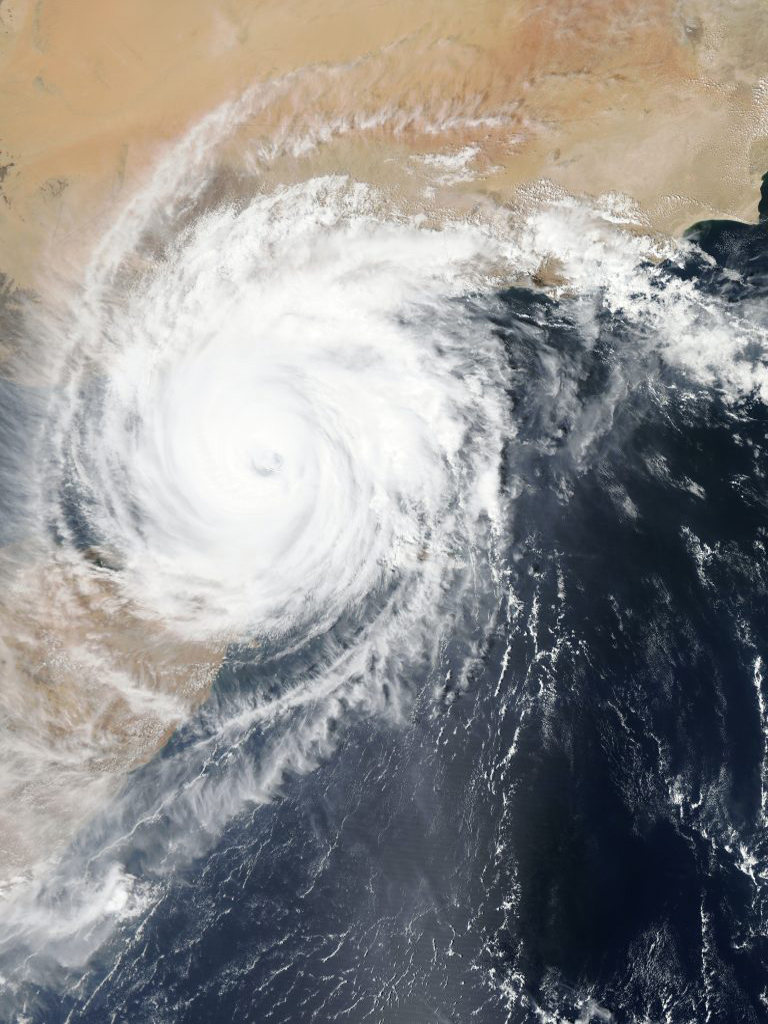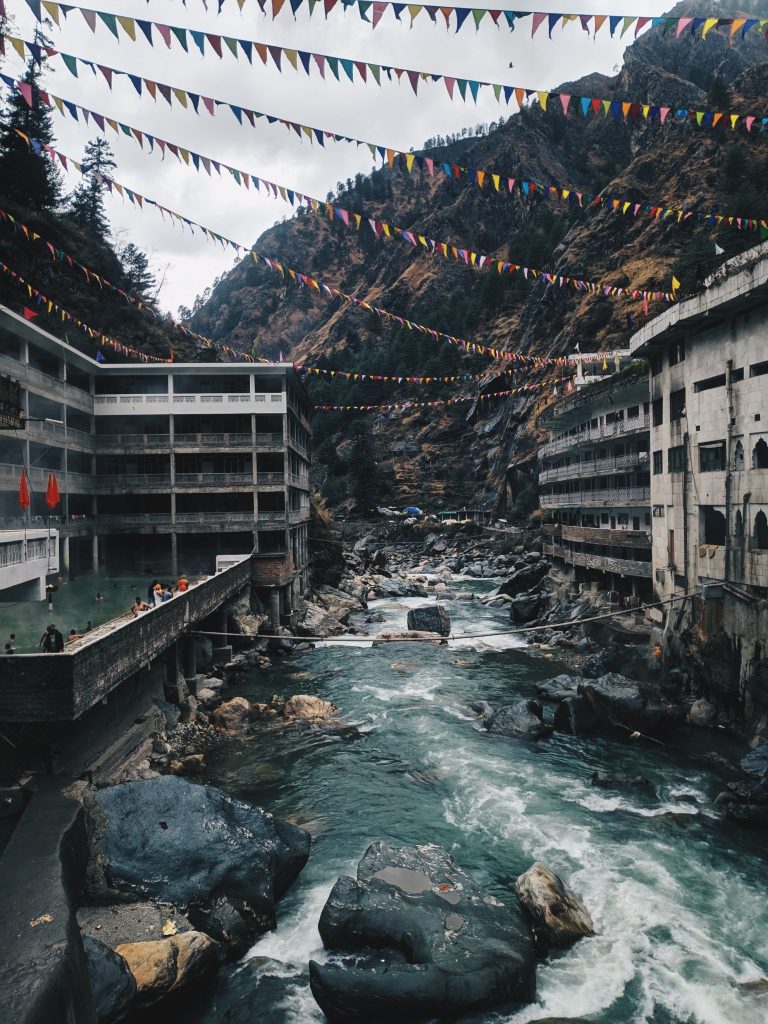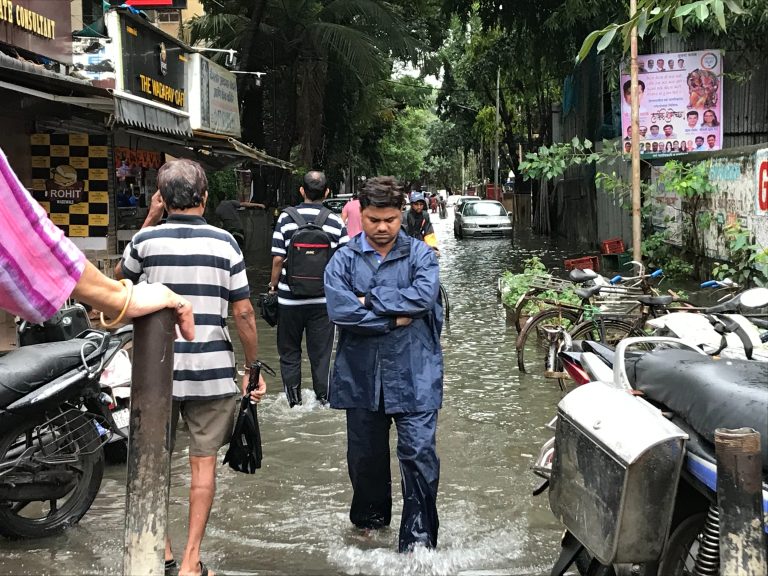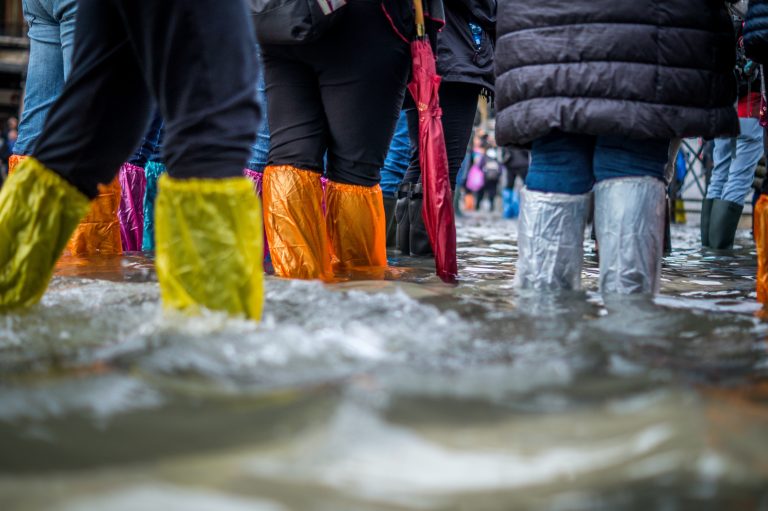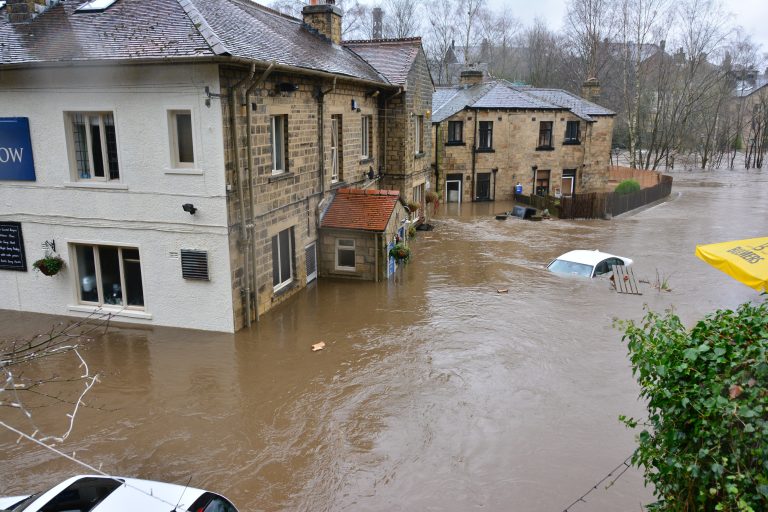- Earthquake
- Mass movement
- Volcanic activity
KEY FINDINGS
- A total of 432 natural disasters were reported worldwide in 2021, causing 10,492 deaths and $280 billion in economic damage.
- Floods and storms (71%) are the most frequently recorded disasters worldwide in the last two decades.
- Earthquakes are the deadliest among all natural disasters causing over 700K deaths or 58% between 2000-2021.
- 533 disaster events occured in the U.S. from 2000-2021 causing 13.7K deaths and $1.23 trillion economic damage.
- Natural disasters caused a total of 797 deaths in 2021 in the U.S., with excessive heat being the deadliest natural disaster in an average year.
- Hurricane Katrina is the costliest natural disaster in U.S. history, causing more than $180 billion in economic damage.
Natural disaster Classification
Natural disasters are severe weather events that can endanger human health and safety, damage property and critical infrastructure, and disrupt homeland security.
In order to be considered a natural disaster, an event must meet at least one of the following criteria:
- Ten or more people killed
- 100 or more people affected
- Declaring a state of emergency
- Call for international assistance
Geophysical Disasters, Hydrological Disasters, Meteorological Disasters, Climatological Disasters, Biological Disasters and Extra-terrestrial Disasters are the six broad types of natural hazards. However, for the purpose of this article, we will focus only on geophysical, hydrological, meteorological and climatological disasters
- Flood
- Landslide
- Wave action
- Storms
- Extreme temperature
- Fog
- Drought
- Glacial lake outburst
- Wildfire
- Animal accident
- Epidemic
- Insect infestation
- Impact
- Space weather
NATURAL DISASTERS AT A GLANCE
The world’s exposure to natural hazards is growing as the population and infrastructure grow. This is especially true in coastal areas, where the population is growing fastest and there is more exposure to floods, cyclones and tidal waves.
432 natural disaster-related events were documented in 2021 throughout the world. Overall, this led to 10,492 fatalities, affected 101.8 million people, and resulted in economic losses of $280 billion.
Trend in the number of natural disasters
Although the number of people who died or were affected by natural disasters was lower than the 20-year average, 2021 was still a year marked by an increase in the number of disaster events and extensive economic losses.
Globally, the number of natural disasters has increased at an alarming rate, growing from 5 incidents in 1900 to a whopping 432 in 2021. 2005 was a particularly devastating year, with 442 incidents occurring globally. These numbers are larger than any other year on record, which is why 2005 was the most difficult year for many people around the globe.
Source: CRED
Number of natural disasters worldwide by type
From 1990 to 2021, a total of 10,646 natural disasters occurred globally. Out of all of the natural disasters that have occurred since 1990, flooding has been the most common. 42.6% of the 10,646 total natural disaster incidents were floods.
This was followed by different types of storms at 3,132 incidents or 29.4% of the total natural disasters in this time period. Together, floods and storms account for 70% of all disasters that have occured since 1990.
In contrast to floods and storms, geophysical hazards such as volcanic activity, landslides, drought, etc., generally had a lower occurrence and they usually result in lower human and economic losses.
Natural Disasters by country
In the 21-year period between 2000 and 2021, a whopping 8,168 natural disasters were recorded globally. China suffered the highest number of these disaster events as can be seen in the map below.
In total, between 2000-2021, there were 606 natural disaster events in China (7.4%). The high frequency of disasters in China is largely due to the size of the country and landscapes that feature a high risk of natural hazards such as river basins, flood plains and seismic fault lines.
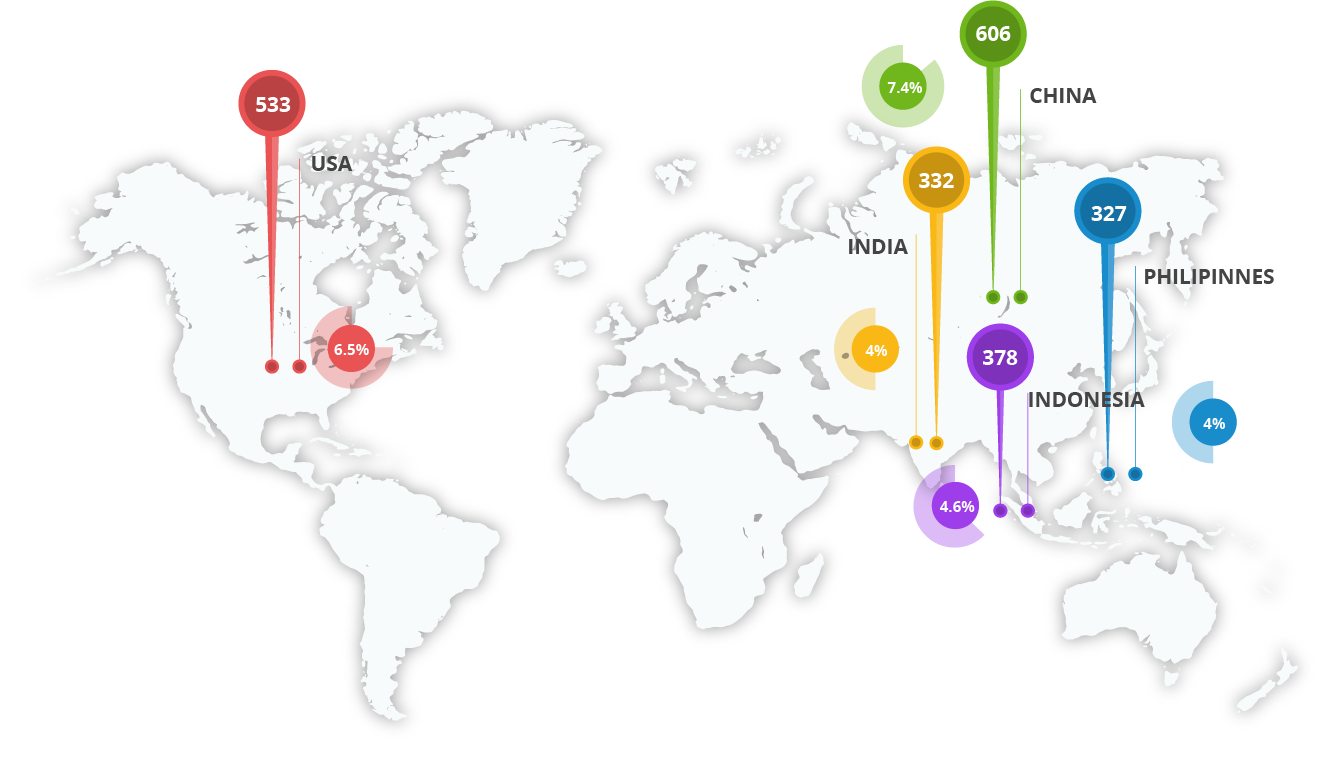
Source: CRED
HUMAN COST OF DISASTERS: DEATHS FROM NATURAL DISASTERS
Natural disasters can be extremely destructive, leaving devastation and loss in their wake. They can cause injuries and death, damage property and livestock, and have a serious impact on the economy.
Deaths per year since 1945
People displaced per year
People affected
Lost lives since 2000
disasters are getting more severe but killing fewer people
The death toll from natural disasters varies greatly from year to year; sometimes there are very few deaths, while other years see a large disaster that claims many lives.
- 2004, 2008, and 2010, were the deadliest years on record with over 200,000 people killed each year.
- The average number of deaths worldwide from 2000 to 2020 was approximately 60,000 deaths per year.
In the last three decades, the average number of people killed by natural disasters each year has decreased by 42%. This is thanks to technological advances that allow for better prediction and communication of disasters, as well as more resilient infrastructure and emergency response systems.
Source: CRED
10 OF THE DEADLIEST NATURAL DISASTERS 2000-2021
There have been three large-scale disasters in the past two decades: the 2004 Indian Ocean Tsunami, the 2008 Cyclone Nargis in Myanmar, and the 2010 Haiti earthquake.
Other mass casualty events include the 2003 heatwaves in Europe which killed over 72,000 people, the 2005 earthquake in Pakistan which killed 73,000 people, and the 2008 earthquake in China which killed almost 90,000 people. These top 10 disasters have a combined death toll of 943K.
The top 10 deadliest disaster events account for 76% of all disaster-related deaths. Other events account for about 24%, or close to 290,000 deaths. This means that the majority of disaster-related fatalities are concentrated in a small number of disasters.
Total number of deaths by disaster type
Earthquakes are one of the most deadly natural disasters. In the last 20 years, they have killed more than half a million people and affected more than 120 million.
Earthquakes killed 58% or 721,318 people.
Storms killed 16% or over 199,000 people.
Extreme temperatures caused over 165,923 deaths.

Floods caused 104,614 deaths since 2000.
Droughts killed over 30,000 people or 2%.
Other natural disasters account for 1% of all deaths.
U.S. NATURAL DISASTER STATISTICS
The United States is a large country with a diverse geographical landscape. This means that the country experiences a variety of natural disasters on a frequent basis. The U.S. ranks second among countries with the most natural disasters with China being first.
Natural disasters since 1999
Economic losses
People affected
Lost lives since 1999
HURRICANES ARE THE MOST COMMON NATURAL DISASTERS
The U.S. is a country that is no stranger to natural disasters. From the hurricanes of the Gulf Coast to the trailer-tossing storms of Tornado Alley to the ground-pounding quakes of California, mother nature can be quite merciless.
Of all recorded natural disasters in U.S. history, hurricanes have caused the most deaths and destruction. When occurring in the North Atlantic, central North Pacific, and Eastern North Pacific Oceans, hurricanes cause massive damage due to high winds and flooding.
Although the Atlantic hurricane season is officially from June to November, hurricanes can occasionally originate outside of those months.
This includes only major natural disasters that brought a considerable amount of damage cost and human deaths.
EXCESSIVE HEAT BRINGS THE MOST DEATHS IN THE U.S.
While natural disasters like tornadoes, hurricanes and floods often capture the public’s attention, it’s extreme heat that actually deserves more awareness.
Excessive heat is one of the leading causes of death in the United States, claiming an average of 105 lives per year from 2012 to 2021.
This makes it the deadliest natural disaster in an average year, outpacing the average death tolls from flooding (98), tornadoes (79) and rip currents (70).
“Heat is the #1 weather-related killer in the U.S.”
Source: NWS
- Heat caused 190 deaths in the U.S. in 2021, up from 187 in 2019.
- Rip currents accounted for 111 fatalities in 2021.
- Natural disasters caused a total of 797 deaths in 2021.
- A heatwave in the 1990s tragically claimed over 1,000 lives.
THE 10 COSTLIEST HURRICANES IN U.S HISTORY
Hurricane Katrina (2005)
Adjusted cost: $186.3 billion
On August 25th, 2005, Hurricane Katrina made landfall in the U.S. as a Category 1 storm. It quickly moved into the Gulf of Mexico and strengthened to a Category 5. Hurricane Katrina was a large and powerful hurricane that caused extensive damage. The wind and the rising water levels resulted in the failure of the New Orleans levee system, which led to the death of over 1800 people and the displacement of more than 1 million people.
Hurricane Harvey (2017)
Adjusted cost: $148.8 billion
Hurricane Harvey was an unprecedented and devastating natural disaster. More than 30 inches of rain fell on 6.9 million people, causing over 100 deaths, displacing more than 30,000 people, and destroying more than 200,000 homes and businesses.
Hurricane Maria (2017)
Adjusted cost: $107.1 billion
Among the costliest storms in U.S. history, Maria struck Puerto Rico and St. Croix in 2017, leaving behind a trail of destruction. The storm caused widespread damage to the island’s transportation, agriculture, communication and energy infrastructure, resulting in numerous indirect deaths.
Hurricane Sandy (2012)
Adjusted cost: $81.9 billion
With $81.9 billion in damage, Hurricane Sandy was one of the most destructive storms in U.S. history. The Category 1 hurricane caused extensive damage to New York City, flooding the city’s transportation systems and leaving thousands of homes destroyed.
Hurricane Ida (2021)
Adjusted cost: $78.7 billion
Ida is one of three major storms to make landfall in Louisiana with high winds. The storm caused widespread damage to the state’s energy infrastructure, leaving millions without power for a week.
Hurricane Irma (2017)
Adjusted cost: $59.5 billion
Hurricane Irma struck Florida on Sept. 10, 2017 as a Category 4 storm. Houses had their roofs ripped off. Coastal cities were flooded. More than 6.8 million people were left without power. Irma is the sixth-costliest hurricane to hit the mainland United States, causing an estimated $60 billion in damage.
Hurricane Andrew (1992)
Adjusted cost: $55.9 billion
Andrew was one of three Category 5 hurricanes to hit the U.S. mainland, and the storm’s high winds caused devastating damage. Over 125,000 homes were either damaged or destroyed, and at least 160,000 people in Dade County, Florida were left homeless. Andrew also caused some damage in Louisiana when it hit there as a Category 3 hurricane.
Hurricane Ike (2008)
Adjusted cost: $40.2 billion
Although it was only a Category 2 storm at landfall, the destruction from Hurricane Ike was widespread due to its size. The large hurricane generated a huge storm surge along the coasts of Texas and Louisiana, as well as wind and flooding damage as far away as Pennsylvania. 112 people were killed in the hurricane.
Hurricane Ivan (2004)
Adjusted cost: $31.6 billion
Ivan was a Category 3 hurricane that hit Gulf Shores, Alabama on September 16, 2004. It weakened once it reached inland and caused more than 100 tornadoes and heavy rain across the southeastern U.S. The hurricane merged with a frontal system over the Delmarva Peninsula on September 18.
Hurricane Michael (2018)
Adjusted cost: $29 billion
The storm that struck the Florida panhandle in 2018 was unexpected in its severity. A Category 5 hurricane with winds over 160 mph, it killed 7 people outright and 43 more in the aftermath through traffic accidents and other medical complications. The clean-up process after the hurricane was difficult and dangerous, and many people lost their lives in the effort.
